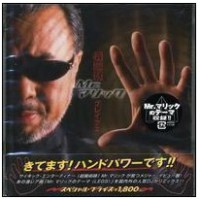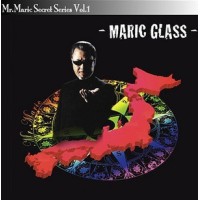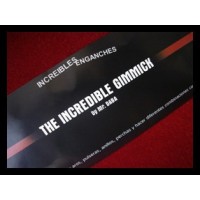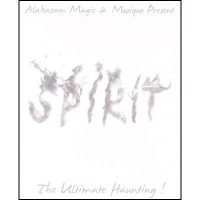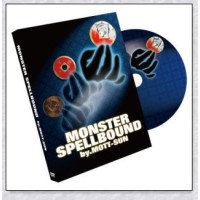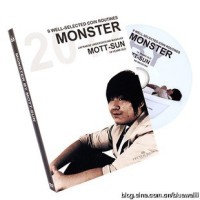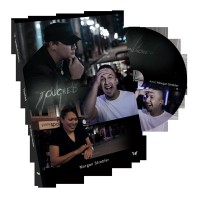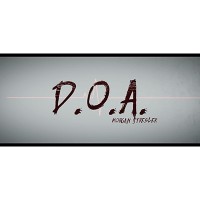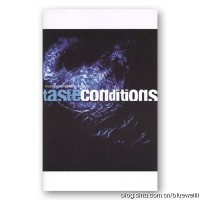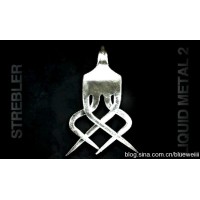Mirror by Matt Mello
- Product Code: C#7990
- Reward Points: 5
- Availability: In Stock
- $5.98
-
$1.69
- Price in reward points: 169
the handling. There are a number of typographical errors, but they wont hinder your ability to understand the material. The photos are clear and helpful.
From an aesthetic standpoint, several of the authors paragraphs are much too lengthy. One of them clocks in at a whopping 32 lines. He should have broken up these protracted paragraphs into shorter nuggets.
I like the effect and the presentation, which were inspired by a Derren Brown premise.
I dont like the authors method for having the participant create a two digit number. He tells us that his method was inspired by the number selection process used by Banachek in his effect Phone Psychs.
In Mr. Mellos method, the participant chooses the numbers by using the fingers of both of her hands in a rather circuitous manner. I imagine that the participant would wonder why she was required to use her fingers to choose a two digit number. Why couldnt she simply name any two numbers?
I believe that a sentient participant realizes that the serial number on a bill can begin with any number from one to nine, inclusive. In her attempt to reconstruct this effect, she will quickly realize that, given Mr. Mellos method, it was not physically possible for her to construct a two digit number that began with any number higher than four.
Will she conclude that, due to an amazingly fortuitous stroke of luck, she just happened to remove a bill whose serial number began with a digit no greater than four. I doubt it.
Will she suspect that the performer is a masochist, because he employed a number selection procedure that will cause the effect to fail more than 50% of the time. Possibly.
Or will she correctly conclude that her choice of numbers was significantly limited? You betcha. This awareness may lead her to see through the presentation and cause her to question the performers real motivation for putting her bill in his pocket, then giving it back to her. These suspicions kill the magic. I dont like it.
Mr. Mello offers two variations of the effect. In the first version, the performer borrows a dollar bill, writes something on it and puts it in his pocket. Using the same unnatural method, the participant chooses a two digit number. The performer returns the bill to the participant and she discovers that the number the performer wrote on the bill matches her number. I dont like it because of the method used to create the participants number.
In the second version, the performer draws something on his dollar bill, but doesnt let the participant see it. For no reason whatsoever, he places the bill in his pocket. He instructs the participant to remove one of her bills and draw a mustache, beard, sunglasses, eye patch, hat, or tie on Georges portrait. The performer removes his bill from his pocket and shows that he drew the same object.
I dont like this version because there is no presentational justification for the performer putting the bill in his pocket, and because of the small number of objects that the participant can draw.
By employing a very old, very well known method, I can let the participant draw anything on her bill. I draw something on my bill and it never leaves her sight. Our drawings will match.
Reviews (0)
Related Products
A Study On Lennart Green by Takumi Takahashi
The student has become the master. 'A Study On Lennart Green' is an in-depth, encyclopedi..
$3.99 $7.99
Amazecups by Danny Orleans
Coins. Glitter. Salt. Milk. Juice. M&M's. You can make so many things appear when you perform Am..
$1.99 $4.98
The Nte Principle by Ronald Levy & Devin Knight
The Nte Principle by Ronald Levy & Devin KnightPDFA card feat that can be done over the radio. T..
$1.99 $4.99
Semi Automatiks by Jean-Pierre Vallarino
• Carrefour • Val’s enveloppe • Business card • Impossible location • À 100% • D..
$2.99 $5.99
Recommend
World Of Mr Maric by Mr Maric
World Of Mr Maric of Japan's famous magician Malik's performanceMr. Maric in the South Korean variet..
$1.99 $4.15
Maric Glass by Mr Maric
Mr Maric - Maric Glass Coin penetrate glass , rings disappeared from the glass, most intuitive pe..
$1.69 $3.98
Incredible Gimmick by Mr Daba
Mr Daba - INCREDIBLE GIMMICK Two rubber bands are giving for examination. Now by placing them tog..
$1.69 $4.23
Six Pack Surprise by Mr Daba & George Iglesias
Stage empty-handed out drinks Mr Daba & George Iglesias - Six Pack Surprise "A new and sensation..
$1.99 $4.99
Spirit by Mozique
Spirit by Mozique - Trick A sensational Haunted Deck effect, which utilizes absolutely no bod..
$6.99 $11.90
Monster Spellbound by Mott-Sun
Mott-sun - Monster Spellbound Demonstration effect :http://www.tudou.com/programs/view/ifXV9KS..
$1.99 $4.99
Monster by Mott-Sun
Mott-Sun - Monster FrenchDrop new work ! Coins with a devil Ponta The Smith 's Japanese Super ..
$1.99 $4.99
Mo-Fly by Moritz Mueller
Moritz Mueller - Mo-Fly Demonstration effect :http://www.penguinmagic.com/p/5011 A visual and eye-..
$1.69 $3.98
Morgan Strebler Penguin Live Online Lecture
Site lectures Penguin Live Online Lecture - Morgan Strebler "As a magician, Morgan is a true en..
$1.99 $4.68
Touched by Morgan Strebler And Sansminds
Morgan Strebler - TouchedMind and movement, a force that constantly shatters you.What if you can cro..
$1.99 $4.23
Doa by Morgan Strebler And Sansminds
Morgan Strebler and SansMinds DOA - pulse This is the SansMinds company in 2015 last horror mag..
$1.99 $4.99
Taste Conditions by Morgan Strebler
Morgan Strebler - Taste ConditionsPDFThis mesmerizing and innovative effect is actually simple, but ..
$2.99 $5.89
Spun Starring by Morgan Strebler
Morgan Strebler - Spun Starring The ultimate suspension coins and coin most incredible bend ! If ..
$1.99 $4.99
Liquid Metal 2 by Morgan Strebler
Morgan Strebler - Liquid Metal 2 E company in the 6th unveiled by the Morgan Strebler price of 2..
$1.99 $4.99
Liquid Metal by Morgan Strebler
ideas Morgan Strebler - Liquid Metal Starring Demonstration effect : http://www.penguinmagic.c..
$1.99 $4.99
Konnected by Morgan Strebler
Morgan Strebler & SansMinds - Konnected Magician Morgan Strebler classic method of performing fl..
$1.99 $4.99






